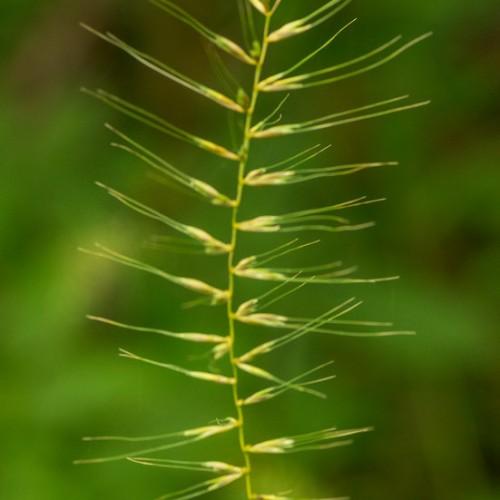
bottlebrush grass
Elymus hystrix
Cycle:
Perennial
Watering:
Minimum
Hardiness Zone:
5 - 9
Flowers:
Flowers
Sun:
Full sun,part shade
Leaf:
Yes
Growth Rate:
Low
Maintenance:
Low
Drought Tolerant:
Yes
Salt Tolerant:
Yes
watering
Bottlebrush grass should be watered once or twice a week, depending on weather conditions. If it is hot and dry out, water more often; if it is cooler and wet, water less often. The amount of water should be generous and should soak the soil to a depth of 6 inches (about 15 cm). This will encourage deep root growth and ensure the plant has enough water for a long time. During hot summer periods, water can evaporate quickly so increase watering frequency to prevent stressful dry spells. Do not water the leaves as that can increase the chance of disease.
sunlight
Bottlebrush grass (Elymus hystrix) prefers full sun and should receive between 6 and 8 hours of direct sunlight each day for optimal growth. This species does best in an area that is sunny and free from shade for the majority of the day. If possible, the grass should be exposed to sunlight throughout the day so that it can photosynthesize and produce essential products necessary for growth and flowering. During the summer months, bottlebrush grass will appreciate additional sunlight and will flower more abundantly with greater exposure. In winter months, however, providing the grass with some shade from the harsh elements can be beneficial.
pruning
Bottlebrush grass (Elymus hystrix) should be pruned in late fall or early spring before it goes dormant. Pruning should not exceed 1 third of the plant's height or the oldest and tallest stems. This helps maintain the size of the grass and encourages new growth. For best results, use sharp shears or hedge clippers and prune only the top parts of the growth. To prevent disease, do not prune toward the center of the plant, but cut the stems off at their base. After pruning, rake away any dried stems and leaves.
